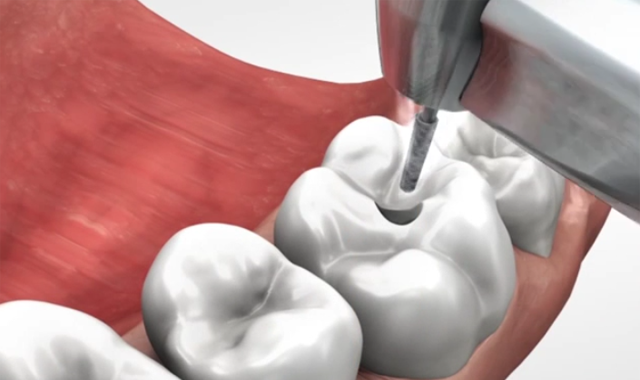Preparation rules for ceramic inlays and partial crowns
KOMET's 4562ST expert set was compiled in close cooperation with six renowned experts from dental clinics and practices to simplify and systemize the precise shaping of cavities prior to receiving ceramic inlays and partial crowns.

KOMET's 4562ST expert set was compiled in close cooperation with six renowned experts from dental clinics and practices with a view to simplify and systemize the precise shaping of cavities prior to receiving ceramic inlays and partial crowns.
The set contains, among other instruments, three newly developed tools that are provided with a depth mark (recognized by the letter "D" standing for "Depth" in the reference number) to guarantee the required minimum occlusal thickness of ceramic restorations.
Related reading: How to create optimal root-canal access using Komet specialty instruments
Ceramic restorations have been scientifically recognized for a long time and enjoy great popularity because they are free of metal and give an esthetically pleasing result.
More and more patients directly ask for a ceramic restoration. What is important, though, is that all requirements for a successful ceramic reconstruction are already considered during the preparative stages. Premature los of a ceramic restoration is often due to insufficient depth of the cavity or nonobservance of the minimum thickness of the layers.
The preparation concept was conjointly developed by Priv.-Doz. M. Oliver Ahlers, Dr. Uwe Blunck, Prof. Dr. Roland Frankenberger, Dr. Jan Hajto, Dr. Gernot Morig and Prof. Dr. Lothar Probster.
Continue reading the technique on Page 2 ...
1: Using the Diamond 6847KRD, open the cavities and determine the minimum substance thickness. Please take the shifting of the reference point into account.
2: Prepare a box cavity. Use steel matrices to protect the adjacent teeth. Create an interproximal box. The proximal enamel walls remain intact for the time being. Make sure not to create a spring edge or vertical surfaces and to prepare an angle of 90°. Give the edges of the box a slightly concave shape.
3: With the Diamond 8862, remove the proximal enamel, avoiding contact with the adjacent teeth.
4: If required, rework the proximal box with sonic tips (Diamond SFD7 and Diamond SFM7).
5: Using Diamond 8847KR, determine the size of the cavity. Tilt the instrument in the oro-vestibular direction.
6: With the Diamond 8845KR, round off the cavity floor and the transition between the cavity floor and the box.
7: Finish the cavity. Make sure to create smooth, rounded edges. Avoid leaving sharp transitions. The minimum width of the isthmus should be 2.5 mm. Round off all angles in the cavity. The minimum occlusal depth should be 1.5 mm. The minimum opening angle of the cavity should be 6°-10°.
8: With the Diamond 8959KR, shorten the cusps horizontally.
Finish reading the technique on Page 3 ...
9: Using the Diamond 8379, round off all inner edges. Then, slightly round all outer edges.
10: Round off all transitions within the preparation with the Diamond 8862. Make sure to observe a minimum substance thickness of 2 mm. The thickness of the remaining enamel wall must be at least 2 mm. Do not remove overhangs from walls with sufficient thickness but block out with fillings fixed by adhesive dentin bonding. Make sure to observe a minimum substance thickness in the area of the fissures.
Related reading: Komet USA debuts new bone cutter at IDS 2015
Watch a video of the above technique:
More from Komet USA: How to remove crowns using specialized cutters from Komet USA